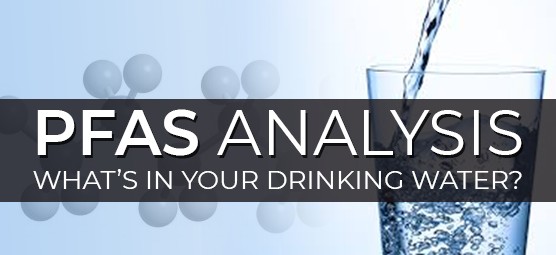In this installment of Tech Tips, Will Flannery, Field Service Engineer at GenTech Scientific, addresses questions he’s received about PFAS Analysis, and the types of equipment needed.

In the last few months I have received a number of questions from potential customers regarding instrumentation for the analysis of per- and polyfluoroalkyl substances (PFAS). Since the 1940s PFAS chemicals have been manufactured and used in a variety of industries around the world. From non-stick cookware to food packaging, PFAS have become common in our daily lives and as a result, they have become persistent in the human body and the environment[1]. As we learn more of the environmental and toxicological impacts of these compounds, individual states have begun to introduce regulatory limits for their levels in drinking and surface waters[2]. There is currently no EPA regulation for these compounds, though action levels have been recommended (70ppt), a health advisory has been issued, and several PFAS compounds are required to be tested for and monitored in drinking water under the 1996 Safe Drinking Water Act[3], [4].
In general, customers testing these compounds using the established EPA methods (533, 537, and 537.1)[5] will need a Triple Quad LC/MS system with a pump capable of delivering a binary gradient and autosampler capable of 10uL injections. All three methods report detection limits in the low part per trillion (ppt) range. The actual model triple quad they will need is ultimately dependent on the reporting levels required and personal preference for manufacturer. Some instruments may work just fine for monitoring, but may not provide enough sensitivity to hit the 13ppt limit required by New Jersey, for example. To be safe, in general I would recommend the older instruments for customers doing monitoring, and newer, more sensitive instruments to those doing state-regulated work.* That being said I have customers in the field who report achieving sub ppt detection limits on PFAS compounds using older instrumentation.
These instrument recommendations are based on a comparison of the sensitivity specification for reserpine to the instruments used in the EPA methods 537 and 537.1, no specific instrument is listed for 533. These recommendations are listed by manufacturer, in order of less sensitive to more sensitive.
Thermo: TSQ Access MAX, TSQ Quantum Ultra, TSQ Vantage, TSQ Endura
Agilent: 6430, 6460, 6490
Waters: Quattro Premiere XE, TQD, Xevo TQ-MS, Xevo TQ-S
Sciex: 3500, 5500, 6500
Shimadzu: 8050
*GenTech does not guarantee specific customer results.
Instrument selection is just one part of the equation when doing PFAS analysis. Since these compounds have become pervasive in the environment contamination is a concern in the analysis. Labs running this type of analysis must ensure all items and reagents used are free from PFAS contamination. Using autosampler vial caps containing Teflon for example would be a source of potential contamination compromising the actual detection limits achieved when running the analysis.
I hope this helps answer some of the questions about this methodology. I’m happy to discuss this with customers when needed or to answer other related questions.
-Will Flannery, Field Service Engineer
[1] PFAS, What You Need to Know, US EPA
[3] Fact Sheet PFOS and PFOA in Drinking Water Health Advisories, US EPA
[4] 1996 Safe Drinking water Act Third Unregulated Contaminate Monitoring Rule
[5] EPA Analytical Methods for PFAS in Drinking Water, US EPA





